
2022/23 Consumer Care
Draft
Guidelines Annual
Alignment Statement report
under the Official Information Act 1982
18 December 2023
Released
2022/23 Consumer Care Guidelines Annual Alignment Statement report
1
Executive summary
This report presents retailer self-assessed statements of alignment with the Consumer Care
Guidelines (Guidelines) for the period 1 July 2022 to 30 June 2023. This is the second
alignment report since the implementation of the Guidelines in July 2021.
In the 2022/23 Consumer Care Guidelines Annual Alignment Statement report (2022/23
Alignment report we contacted more retailers and made significant improvements to the data
collection and reporting process. These changes respond to learnings from the 2021/22
Alignment report.
The 2022/23 Alignment report shows much greater levels of reported alignment with the
Guidelines compared with results from the 2021/22 Alignment report, particularly among
large and medium retailers.
Of the 14 large and medium retailers who provided self-assessments, 12 stated they were
fully aligned. Of these, all six large retailers, and six out of eight medium retailers reported
full
Draft
alignment. The two outstanding medium retailers self-reported partial alignment with the
Guidelines.
As large and medium retailers hold ~98% of all residential ICPs in New Zealand, these
results indicate that the majority of domestic consumers are covered by retailers that
consider themselves to be fully aligned with the Guidelines.
We’ve seen smaller retailers are engaging more with the Guidelines. While small retailers as
a group are least aligned with the Guidelines, alignment is improving.
In terms of specific areas of improvement, we’ve seen greater alignment with the Guidelines
for disconnections and medically dependant consumers.
This report supports the Authority’s broader efforts to support consumers with their dealings
with retailers. To ensure the Guidelines’ purpose and intended outcomes are consistently
being delivered, while also supporting competition and innovation, we are proposing to
establish mandatory minimum standards for consumer care within the Code, which will be
based on (and will replace) the Guidelines. The findings of both the 2021/22 and 2022/23
Alignment reports informed the Authority’s decision.
under the Official Information Act 1982
Released
2022/23 Consumer Care Guidelines Annual Alignment Statement report
2
Contents
Report
Error! Bookmark not defined.
Executive summary
2
Contents
3
1.
Purpose
4
2.
Introduction
4
3.
2022/23 Alignment Statement findings
4
We’ve seen greater alignment with the Guidelines by large and medium retailers
5
More retailers provided alignments statements in 2022/23
7
Smaller retailers are engaging more with the Guidelines
8
Small retailers as a group are least aligned with the Guidelines but are improving
10
Draft
Some retailers used alternative actions to align with the Guidelines
11
Improvements were seen for disconnections and medically dependant consumers 14
4.
Methodological improvements were made for the 2022/23 Alignment report
16
We expanded the retailer eligibility criteria
16
We used a new approach to collect retailer alignment statements
17
We redesigned the alignment statement form to improve reporting
18
Alignment statements are voluntary and self-assessed
19
5.
Next steps
19
Alignment statements helped inform our decision to develop mandatory minimum
standards based on the Guidelines
19
6.
Attachments
20
Appendix A Summary of the Consumer Care Guidelines
21
Appendix B 2021/22 Certificate of alignment
22
Appendix C 2022/23 Annual Alignment Statement response form
23
under the Official Information Act 1982
Released
2022/23 Consumer Care Guidelines Annual Alignment Statement report
3
1.
Purpose
1.1.
This report summarises the findings of electricity retailers’ self-assessed statements
of alignment with the recommendations of the Consumer Care Guidelines1 for the
period 1 July 2022 to 30 June 2023.
2.
Introduction
2.1.
The Consumer Care Guidelines (Guidelines) came into effect on 1 July 2021. The
Electricity Authority Te Mana Hiko (Authority) developed the Guidelines in
collaboration with the industry and other stakeholders to ensure retailers deliver a
consistent and supportive standard of care to domestic consumers in New Zealand.
2.2.
The ten parts of the Guidelines are voluntary both in terms of alignment and
reporting (see Appendix A for further details).
2.3. Draft
Under the Guidelines, retailers should provide the Authority with a Consumer Care
Annual Alignment Statement (alignment statement), signed by their Chief Executive
(or an equivalent) that outlines their level of alignment with the recommendations of
the Guidelines over the course of each financial year (1 July to 30 June).
2.4.
In June 2023, the Authority published the findings of the first alignment period
(2021/22 Alignment report). This covers the first year since the introduction of the
Guidelines up to 30 June 2022.
2.5.
This 2022/23 Consumer Care Guidelines Annual Alignment Statement report
(2022/23 Alignment report) presents the findings of the second alignment period (1
July 2022 to 30 June 2023) since the introduction of the Guidelines.
2.6.
Both Alignment reports provide the Authority with ‘a better information base from
which to assess the extent that the intended outcomes of the Guidelines are being
achieved.’2
3.
2022/23 Alignment Statement findings
3.1.
Where appropriate, the findings of the 2022/23 Alignment report are presented in
comparison to the findings of the 2021/22 Alignment report.
3.2.
This report specifically requested information from individual retailers operating in
under the Official Information Act 1982
the market, since some retailers operate multiple retail brands under the same
ownership model. Except in one instance, all retailers submitted individual retail
brand alignment statements.
3.3.
As was the case for the 2021/22 Alignment report, the 2022/23 responses are
divided into three size categories based on the number of residential information
control points (ICPs) held by each retail brand as at 30 June 2023, using the
following division:
Released
1 The Guidelines can be found on our website: https://www.ea.govt.nz/documents/2093/Consumer-Care-
Guidelines.pdf
2 Electricity Authority Te Mana Hiko, Consumer Care Guidelines: Decision, March 2021, 26.
2022/23 Consumer Care Guidelines Annual Alignment Statement report
4
Large: brands with more than 100,000 ICPs
Medium: brands with between 99,999 and 10,000 ICPs
Small: brands with less than 10,000 ICPs.
A note on the definition of ‘partial alignment’ and ‘alternative action’
3.4.
The term ‘partial alignment’ is used for retailers that:
(a) in the 2022/23 Alignment report – selected ‘yes’ to some parts of the
Guidelines and ‘no’ to others, or
(b) in the 2021/22 Alignment report – selected ‘does not align’ for one or more
Parts of the Guidelines.
3.5.
Any instance where a retailer has explained an ‘alternative action’ is taken as
meaning the retailer is ‘aligned’ with that Part. Where appropriate, a star icon is
used in the tables below to indicate where a retailer provided an alternative action
response.
We’v Draft
e seen greater alignment with the Guidelines by large and medium
retailers
3.6.
Large and medium retailers self-reported greater levels of alignment with the
Guidelines compared with results from the 2021/22 Alignment report.
3.7.
All 14 large and medium retailers provided self-assessments for the 2022/23
alignment period. This is an improvement from 2021/22 when two medium retailers
did not provide alignment statements.
3.8.
Twelve retailers stated they were fully aligned and two were partially aligned. Of
these, six out of six large retailers, and six out of eight medium retailers reported full
alignment, with the remaining two medium retailers self-reporting partial alignment
with the Guidelines.
3.9.
These results indicate that the majority of all large and medium retailers consider
themselves to be fully aligned with the Guidelines.
under the Official Information Act 1982
Released
2022/23 Consumer Care Guidelines Annual Alignment Statement report
5
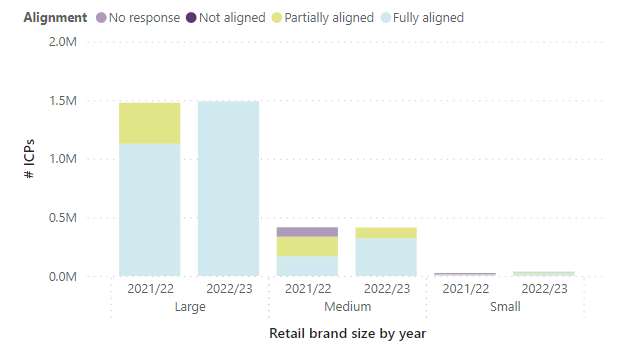
Figure 1: Number of retail brands by ICP count and alignment
Draft
3.10.
All six large retailers stated full alignment for the 2022/23 alignment period, an
improvement from the previous alignment period’s results, where five large retailers
reported full alignment and one partial alignment. Improvement from partial
alignment to full alignment was made for Parts 5 (Account Management), 7
(Disconnection), and 8 (Medically Dependent Consumers).
3.11.
Of the medium retailers, six out of eight self-reported full alignment, with the
remaining two self-reporting partial alignment. This shows an improvement from
2021/22 where only four out of the eight medium retailers self-reported full
alignment, where two were partially aligned, and the remaining two did not respond.
3.12.
Alignment improvements made by medium retailers include one retailer that did not
respond in the previous alignment period, now stating they are fully aligned.
Another medium retailer moved from non-alignment with Parts 4 (Contracts), 5, 7
and 8 to full alignment (with alternative actions used for Parts 2 and 7).
3.13.
In terms of partial alignment among medium retailers, one self-reported non-
under the Official Information Act 1982
alignment with Parts 6 (Payment Difficulties) and 7. This retailer did not submit a
response in 2021/22. Another medium retailer was not aligned with Part 3
(Information Records) for both alignment periods but improved their alignment from
not aligned to aligned for Parts 4, 7 and 10 (Disclosure and Monitoring).
3.14.
Large and medium retailers hold the majority of the market share of the electricity
retail market. The findings presented above conclude that retailers who have self-
reported full alignment with the Guidelines in 2022/23 service over 1.81 million
Released
residential ICPs (with the total number of residential ICPs in New Zealand being
1.94 million).
2022/23 Consumer Care Guidelines Annual Alignment Statement report
6
More retailers provided alignments statements in 2022/23
3.15.
Changes we made to the alignment statement eligibility criteria expanded the
number of retailers that responded to the 2022/23 Alignment report. This is
described further in the methodology section.
Figure 2: Total retail brands contacted in 2021/22 and 2022/23
80
70
17
60
s
17
50
13
d
n
a
il br
ta
e
R
# Draft
40
13
9
30
44
20
7
30
29
10
17
2
6
6
6
8
0
2021/22
2022/23
2021/22
2022/23
2021/22
2022/23
2021/22
2022/23
Large
Medium
Smal
Total retail brands
contacted
Retail brand responses
Submitted response (eligible)
No submission (eligible)
Unknown eligibility
3.16.
There were 57 known eligible retail brands operating in New Zealand (six large,
eight medium, and 43 small) during the 2022/23 alignment period, of which 54 were
asked to submit alignment statements. The remaining three were asked to submit a
response but opted out of the process or became unresponsive to the Authority’s
under the Official Information Act 1982
enquiries.3 This represents an increase in the total number of eligible respondents
by 19, up from the 38 retailers contacted in the 2021/22 alignment period.
3.17.
The number of large and medium retailers remained consistent across both years,
with all growth occurring in the small retailer category due to the expanded eligibility
criteria. Thirteen small retailers were asked to submit alignment statements in
Released
3 All potential y eligible retailers were contacted by email and/or phone and asked to submit an alignment
statement. Once eligibility was confirmed, each retail brand was sent a notification to complete their alignment
statement online via the Authority’s Information Provision Platform. We recognise that a limitation of the
Information Provision Platform is that respondents need to be willing to register themselves on the Platform to
access and complete their alignment statement. Retailers that were not registered on the Platform were not
sent or did not receive a notification to complete an alignment statement. See the Methodology section below
for further details.
2022/23 Consumer Care Guidelines Annual Alignment Statement report
7
2022/23. As described above, only ten of this group were sent alignment forms to
complete.
3.18.
Thirty-five alignment statements were received by the 2022/23 alignment period
deadline of 31 August 2023. Nine retailers submitted their statements late or
requested extensions (one medium retailer and eight small retailers).
3.19.
In addition to the 57 known eligible retailers in 2022/23, a further 17 retailers were
contacted to confirm their eligibility to submit an alignment statement but were
either unresponsive or became unresponsive after requests were made for them to
complete an alignment statement. Some of these retail brands may not be required
to submit a statement (eg, as they do not supply electricity to domestic consumers
or were inactive during the alignment period). However, we were unable to
determine their eligibility status after repeated contact attempts.
3.20.
This group are classified as being of ‘unknown eligibility’ (see Figure 2 above). It is
assumed that all unknown retailers fall into the small retail brand category, with no
Draft
unknown eligibility retailers in the large or medium categories.
3.21.
This brings the total number of known eligible and potentially eligible retailers
contacted for the 2022/23 survey to 74. Between the 2021/22 and 2022/23
alignment periods, this represents an increase of 35 small retailers contacted by the
Authority. However, these additional retailers cover only a very small number of
domestic consumers – approximately 0.6% of the total number of residential ICPs in
New Zealand.
Smaller retailers are engaging more with the Guidelines
3.22.
Due to a change in its approach to assessing retailer eligibility to submit an
alignment statement, the Authority received a significantly greater number of
responses from smaller retailers for the 2022/23 alignment period, as shown in
Figure 3.
under the Official Information Act 1982
Released
2022/23 Consumer Care Guidelines Annual Alignment Statement report
8
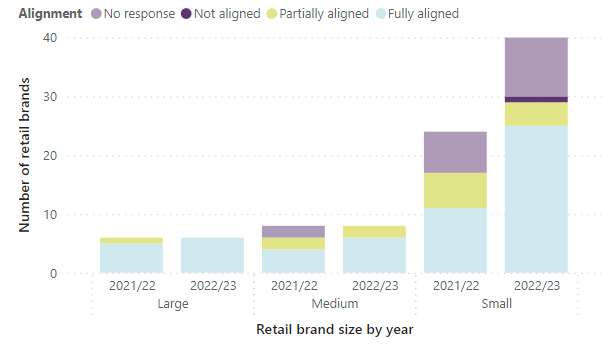
Figure 3: Number of retail brands by size and alignment
Draft
3.23.
In 2021/21, we received alignment statements from 17 out of 24 small retailers. In
comparison, 30 out of 40 eligible small retailers provided responses for the 2022/23
alignment period. This illustrates a response rate increase from 70% to 75% for
small retailers across the two Alignment reports.
3.24.
The increased response rate is positive for two main reasons:
(a) more small retailers are engaging with the Guidelines, and
(b) the specific small retailers who responded in 2022/23 included those who hold
a large number of ICPs (for a small retailer) but did not respond during the
2021/22 alignment period.
3.25.
Figure 4 below illustrates the market share of small retailers that were asked to
provide alignment statements in both 2021/22 and 2022/23. This shows that the full
and partial alignment responses received from small retailers in 2022/23 cover a
greater number of ICPs (and therefore domestic consumers) than those received in
the 2021/22 alignment period.
under the Official Information Act 1982
3.26.
We note that the 30 small retailers who responded in 2022/23 service an estimated
33,400 ICPs while in 2021/22, the 17 small retailer respondents serviced 12,504
ICPs. Regarding non-respondents, the 10 small retailers who did not respond in
2022/23 service an estimated 2,600 ICPs while in 2021/22, the seven non-
respondent retailers serviced 13,130 ICPs. This represents a significant increase in
the number of domestic consumers covered by responsive retailers between the
two alignment periods.
Released
2022/23 Consumer Care Guidelines Annual Alignment Statement report
9
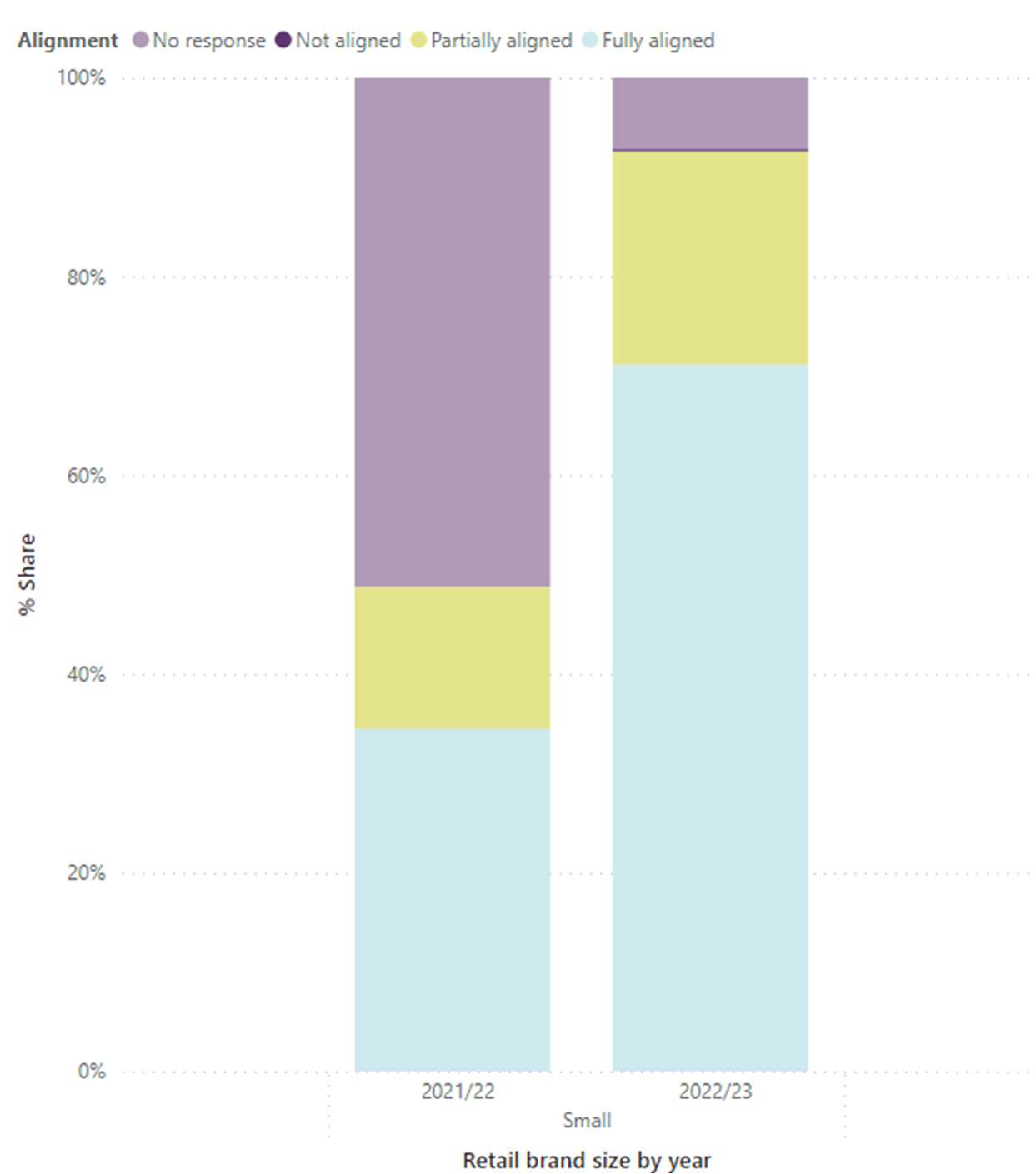
Figure 4: Market share for small retailers by year and alignment
Draft
3.27.
We consider the increased response from these small retailers important and
appreciate the work and engagement undertaken by these retailers in collaboration
with the Authority’s education and compliance team.
3.28.
We acknowledge the different barriers electricity retailers face when committing to
consultation commitments and view this increase in responses from smaller
retailers highlights an increased awareness of the Guidelines.
Small retailers as a group are least aligned with the Guidelines but are
improving under the Official Information Act 1982
3.29.
In comparison to the large and medium retailers, small retailers self-reported lower
levels of alignment with the Guidelines. Of the 30 small retailers who responded,
four reported partial alignment and one reported total non-alignment across all
Parts.
3.30.
Of the four partially aligned small retailers, Parts 2, 3, 5 and 8 were identified as key
areas of non-alignment. In some instances, retailers who had previously indicated
alignment with these Parts in 2021/22 now indicated non-alignment.
Released
3.31.
While smaller retailers present greater partial or non-alignment in comparison with
large and medium retailers, we have seen an overall increase of smaller retailers
self-reporting they are fully aligned with the Guidelines.
2022/23 Consumer Care Guidelines Annual Alignment Statement report
10
Some retailers used alternative actions to align with the Guidelines
3.32.
Some retailers identified in their alignment statements where they considered they
were aligned with a Part of the Guidelines but had achieved alignment through
alternative actions. The star icon in Figures 5 and 6 below indicates where retailers
adopted alternative actions for specific Parts.
3.33.
In general, Parts 3, 4, 5 and 7 had the greatest number of retailers self-reporting
alignment through alternative actions.
3.34.
In reference to Part 3, retailers highlighted issues with asking customers for their
preferred language of communication. Retailers noted their preference to
accommodate various languages that could be reasonably anticipated over needing
to resource availability of possibly every language.
3.35.
Some retailers considered recommendations in Part 4 regarding how retailers
should deal with customers with poor credit may result in a negative experience if
followed. These retailers noted that their alternative actions enabled alignment and
Draft
better consumer experiences for their customers.
3.36.
Retailers highlighted various matters with Part 5, with the main issue noted being
the recommendation that retailers be aware of their competitors’ options being
unrealistic and that entities such as Powerswitch are better situated to supply this
service.
3.37.
Comments raised about Part 7 were mostly in response to the Guidelines
recommendations of traceable forms of contact being provided prior to a
disconnection. Retailers adopted alternative actions they considered better provided
certainty for reconnections and avoided unnecessary hinderance for the consumer.
under the Official Information Act 1982
Released
2022/23 Consumer Care Guidelines Annual Alignment Statement report
11

Figure 5: Large and medium retail brand alignment by Part for 2021/22 and 2022/23
Draft
under the Official Information Act 1982
Released
2022/23 Consumer Care Guidelines Annual Alignment Statement report
12

Figure 6: Small retail brand alignment by Part for 2021/22 and 2022/23
Draft
under the Official Information Act 1982
Released
2022/23 Consumer Care Guidelines Annual Alignment Statement report
13

Improvements were seen for disconnections and medically dependant
consumers
3.38.
While all parts of the Guidelines are important, there is strong interest in Part 7
(Disconnection) and Part 8 (Medically Dependent Consumers), given the high risk
and implications of poor alignment with these areas.
3.39.
There was considerable concern regarding lack of alignment by one large and two
medium retailers with Parts 5, 7 and 8 in the 2021/22 Alignment report due to the
market share represented by these retailers. Part 5 deals with business-as-usual
account management practices that affect all residential consumers, while Parts 7
and 8 are most likely to impact consumers in states of financial and/or health-
related vulnerability.
3.40.
Responses for 2022/23 indicate significant improvements have been made
regarding retailer alignment with Parts 7 and 8.
Figu Draft
re 7: Alignment for Part 7: Disconnection
under the Official Information Act 1982
3.41.
Figure 7 shows that all six large retailers and seven medium retailers were aligned
with Part 7. Only one medium and one small retailer remain unaligned with this Part
in 2022/23.
Released
2022/23 Consumer Care Guidelines Annual Alignment Statement report
14
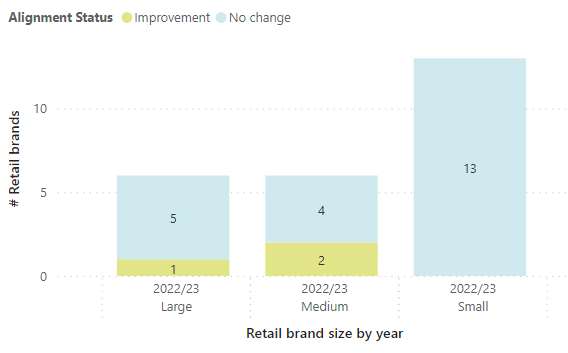
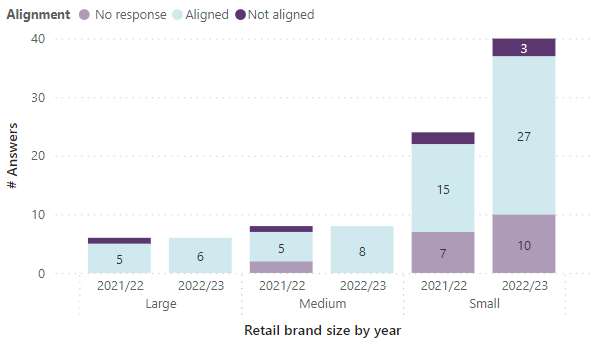
Figure 8: Change in alignment for Part 7
Draft
3.42.
No large or medium retailers reported non-alignment with Part 8 in 2022/23. This
marks a significant improvement from 2021/22, as shown in Figure 9, with one large
and two medium retailers improving from not aligned to aligned.
Figure 9: Alignment for Part 8: Medically Dependent Consumers
under the Official Information Act 1982
Released
2022/23 Consumer Care Guidelines Annual Alignment Statement report
15
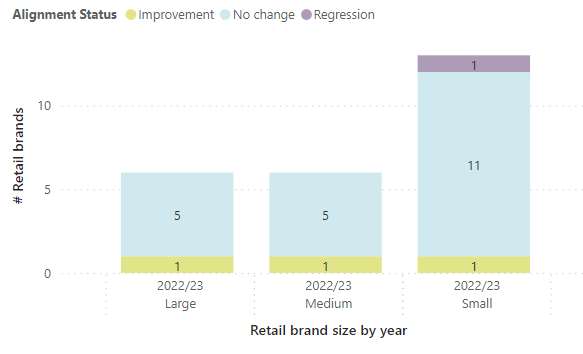
Figure 10: Change in alignment for Part 8
Draft
3.43.
However, one additional small retailer indicated non-alignment with this Part in
2022/23, representing a regression, as indicted in Figure 10.
4.
Methodological improvements were made for the
2022/23 Alignment report
4.1.
Several key changes to the data collection process were implemented for the
2022/23 alignment period, responding to learnings from the 2021/22 Alignment
report. This included:
(a) expanding our criteria for retailer eligibility
(b) using a new platform to collect retailer responses
(c)
revising the alignment statement form to include further detail on extent of
under the Official Information Act 1982
alignment or alternative actions used.
We expanded the retailer eligibility criteria
4.2.
The Guidelines apply to retailers, as defined by the Electricity Industry Act 2010
(Act), that supply of electricity used fully or partly for domestic purposes.4
4.3.
Informed by limitations of the 2021/22 Alignment report process (discussed below),
we expanded our assessment criteria for retailer eligibility for the 2022/23 Alignment
report.
Released
4 The Guidelines also apply to distributors that directly invoice their customers for the supply of electricity and/or
the provision of distribution services used fully or partly for domestic purposes. However, since the publication
of the Guidelines, this type of distributor arrangement is no longer operational in the New Zealand market.
2022/23 Consumer Care Guidelines Annual Alignment Statement report
16
4.4.
For the 2022/23 alignment period, retailer eligibility to submit an alignment
statement was based on three factors:
(a) whether they were operational during the alignment period (1 July 2022 to 30
June 2023), and
(b) if, during this period, they provided electricity directly to domestic consumers,
and
(c)
if, their organisation met the definition of ‘domestic purposes’ in the Guidelines
and/or ‘domestic consumer’ under the Act.
4.5.
Retailers that did not meet one or more of the criteria stated above were not
required to submit an annual alignment statement.
4.6.
The Authority’s Participant Register5 was used to locate all participants classified as
‘electricity retailers.’ These retailers were then contacted to assess their eligibility to
submit an alignment statement using the above criteria.
4.7.
This represents a change from the 2021/22 Alignment report that based retailer
Draft
eligibility on the list of retail brands with residential installation control points (ICPs)6
as shown on the Authority’s Electricity Market Information website (EMI) at the end
of the alignment period (30 June 2022).7 However, EMI data only captures those
retail brands that purchase electricity directly from the wholesale electricity market.
4.8.
Such an improvement identified some smaller retailers that purchase their electricity
directly from larger retailers rather than on the wholesale market. The residential
ICPs (eg, customers) supplied by this type of small retailer are not visible as
individual retail brands on EMI but are rather included within the total residential
ICPs of the larger retailer from which they purchase their electricity.
4.9.
To ensure that the customers of these small retail brands are receiving an
appropriate level of consumer care, the 2022/23 Alignment report was expanded to
include alignment statements from this type of retailer. This resulted in a larger
number of respondents to the 2022/23 Alignment report.
We used a new approach to collect retailer alignment statements
4.10.
The 2022/23 Alignment report used the Authority’s Information Provision Platform to
collect alignment statement from eligible retailers, with the aim of streamlining data
collection.
under the Official Information Act 1982
4.11.
This responded to the known limitations of using non-editable, paper alignment
forms and requesting retailers to submit scanned copies of their signed alignment
responses via email, as was done for the first alignment period.
5 “Participant Register: A register of all participants in New Zealand’s electricity industry”, Electricity Authority Te
Mana Hiko, accessed December 2023. https://register.ea.govt.nz/
Released
6 ICP is defined as the point of connection at which the electrical installation for a retailer's customer is connected
to an electricity network. Each ICP (eg, household connection) is assigned a unique identifying number.
Residential ICPs generally represent places of domestic residence, such as houses, apartment buildings or
other types of dwelling where domestic consumers reside.
7 “Market share snapshot: Traders sorted by residential ICP as at 30 June 2022”, Electricity Authority: Electricity
Market Information, 2023. https://www.emi.ea.govt.nz/r/1gkas
2022/23 Consumer Care Guidelines Annual Alignment Statement report
17
4.12.
Using the Information Provision Platform improved the alignment statement data
collection process by helping the Authority to accurately and efficiently process the
responses collected from each retailer.
4.13.
It also provided retailers with greater certainty regarding their submissions, as each
received an automated PDF copy of their response for their records and to assist
with fact-checking the presentation of their submissions in the 2022/23 Alignment
report.
We redesigned the alignment statement form to improve reporting
4.14.
The Certificate of alignment with the Consumer Care Guidelines (Certificate), used
for the 2021/22 Alignment report, was redesigned to suit the online format of the
Information Provision Platform.
More detailed alignment reporting was requested from retailers
4.15. Draft
The 2021/22 Certificate asked retailer to self-assess their alignment with Parts 2 to
10 of the Guidelines. The possible responses were ‘aligns’ or ‘does not align’, with a
short section under each Part to outline ‘extent of non-alignment’ (see Appendix B).
4.16.
The new 2022/23 online alignment statement form expanded the possible
responses available to respondents (see Appendix C). When stating their alignment
with each Part, retailers could select ‘yes’, ‘no’ or ‘alternative action’.
4.17.
If responding ‘yes’ to a Part, no further questions were asked. If responding ‘no’ to a
Part, retailers were asked to outline the specific paragraphs where they were not
aligned, their reasons for non-alignment, how they intended to resolve non-
alignment, and by what date. This was done to better align the statement responses
with paragraph 126 a) and b) of the Guidelines that asks retailers to ‘describe the
extent to which their alignment with the Guidelines has been achieved and, where
alignment has not been achieved, to explain the reason for this non-alignment and
describe a plan and a commitment to achieve alignment.’8
4.18.
The option to explain ‘alternative actions’ acknowledges Guidelines paragraph ix,
which allows retailers to align with the recommendations of the Guidelines ‘by
taking alternative actions that achieve the purpose and outcomes in Part 1.’9
4.19.
The intention of these changes was to provide us with more detailed information on
how workable the current wording of the Guidelines is for retailers and where
under the Official Information Act 1982
potential improvements could be made to encourage widespread alignment.
Additional improvements
4.20.
All eligible retailers were asked supply statements for each individual retail brand
they operate in the New Zealand retail market. This meant that those retailers that
operate more than one retail brand submitted multiple alignment statements.
4.21.
As requested under Part 10 paragraph 126 of the Guidelines, the responses of
Released
each retailer should be signed by the Chief Executive (or a suitable equivalent) in
8 See Part 10, paragraph 126 a) and b).
Electricity Authority, Consumer Care Guidelines, 2021, 32.
9 Electricity Authority, Consumer Care Guidelines, 2021, 4.
2022/23 Consumer Care Guidelines Annual Alignment Statement report
18
each organisation to verify the statement. For the new online form, respondents
uploaded a signature and declared their submission accurate and complete.
4.22.
Retailers were also requested, under Part 10 paragraph 121, to provide the
Authority with copies of all consumer care policies in effect during the 12 months
alignment period (1 July 2022 to 30 June 2023). If more than one policy was in
effect during this period, the most recent policy should be clearly identified.
4.23.
Extensive instructions on how to complete the new form were included with each
submission form (see Appendix C). Authority staff worked with all respondents to
assist them, as needed.
Alignment statements are voluntary and self-assessed
4.24.
Due to the voluntary nature of the Guidelines, not all eligible respondents submitted
alignment statements for the 2022/23 alignment period. The Authority encouraged
all known eligible retail brands to submit a statement and worked with those less
Draft
familiar with the Guidelines or the Authority’s information systems, to answer
questions and provide assistance wherever possible.
4.25.
The results presented in this report are based on a self-reporting process. Each
eligible retail brand was asked to state their alignment with the recommendations in
Parts 2 to 10 of the Guidelines. All statements provided have been certified by the
Chief Executive or a suitable equivalent in the organisation of each eligible retail
brand.
4.26.
The Authority acknowledges that self-reporting is subjective, and variations can
emerge eg, retailers may have divergent interpretations of the Guidelines’
recommendations and what they consider to be an acceptable minimum standard of
conduct.
4.27.
In this context, self-reporting biases may be included in this report. However, the
responses provided are presented as submitted. Retailers were given an
opportunity to fact check their responses along with any content related to their
organisation contained in this report prior to its publication.
5.
Next steps
5.1.
The 2022/23 Alignment report indicates better overall alignment with the
under the Official Information Act 1982
recommendations of the Guidelines.
Alignment statements helped inform our decision to develop mandatory
minimum standards based on the Guidelines
5.2.
Since the introduction of the Guidelines, the Electricity Industry Amendment Act
2022 introduced an additional statutory objective and function for the Authority,
which directs us to protect the interests of domestic consumers and small business
Released
consumers in relation to the supply of electricity to those consumers. This only
applies to the dealings of industry participants with these ‘small consumers.’10
10 Electricity Industry Act 2010 – Sections 15(2)(3) and 16(1)(ia).
2022/23 Consumer Care Guidelines Annual Alignment Statement report
19
5.3.
The Authority’s main objective is to promote competition in, reliable supply by, and
the efficient operation of, the electricity industry for the long-term benefit of
consumers.11
5.4.
The Authority ran a consultation on four options to update and strengthen the
current Guidelines between September and October 2023.
5.5.
The findings of both the 2021/22 and 2022/23 Alignment reports informed the
Authority’s consultation paper and decision following that consultation.
6.
Attachments
6.1.
The following appendices are attached to this paper:
Appendix A Summary of the Consumer Care Guidelines
Appendix B 2021/22 Certificate of alignment
App Draft
endix C 2022/23 Annual Alignment Statement response form
under the Official Information Act 1982
Released
11 Electricity Industry Act 2010 – Sections 15(1).
2022/23 Consumer Care Guidelines Annual Alignment Statement report
20
Appendix A
Summary of the Consumer Care Guidelines
Part
Overview
Description
Part 1
Purpose
Acts as a guide to retailers in:
adopting behaviours and processes that foster positive
relationships with domestic consumers; and
helping domestic consumers maximise their potential to
access and afford a constant electricity supply suitable for
their needs; and
helping domestic consumers minimise harm caused by
insufficient access to electricity or by payment difficulties.
Part 2
Retailers to publish a
Commitment to publish consumer care policies, produce
consumer care policy
consumer-facing website information, and processes for initial
communications with customers.
Part 3
Information and records
Specific actions to collect and record consumer care information,
Part Draft
relating to consumer care
for the purpose of enabling a retailer to proactively support, as
effectively as possible, any customers who may have difficulty
paying their electricity bill or maintaining connection to electricity.
Part 4
When a customer signs up
What to do when a customer is signed up or a person enquiring
or is denied a contract
with a retailer is denied a contract, following contract law principles
Part 5
Business as usual account
Best practice measures during business-as-usual account
management
management.
Part 6
When payment difficulties
How to respond when a customer anticipates payment difficulties,
are anticipated or arise
is having payment difficulties and/or is in payment arrears.
Part 7
Progressing to
Specific actions to take prior to, at, and following the disconnection
disconnection for non-
and reconnection of post-pay and pre-pay customers for non-
payment of electricity
payment of electricity invoices or during planned disconnections
invoices and reconnection
(eg, for maintenance activity).
Part 8
Additional
Specific actions to fol ow when supplying electricity to MDCs,
recommendations for
including identifying and recording MDCs as soon as possible, and
Medically Dependent
ensuring they are not disconnected for non-payment.
Consumers
9
Fees and bonds
On fees, bonds and how these should be set so that they reflect
reasonable costs.
Part 10
Information and Disclosure
Makes recommendations to retailers concerning information
Monitoring
disclosure to enable better monitoring of alignment and outcomes.
Actions described in this part are the primary focus of this report.
under the Official Information Act 1982
Released
2022/23 Consumer Care Guidelines Annual Alignment Statement report
21









